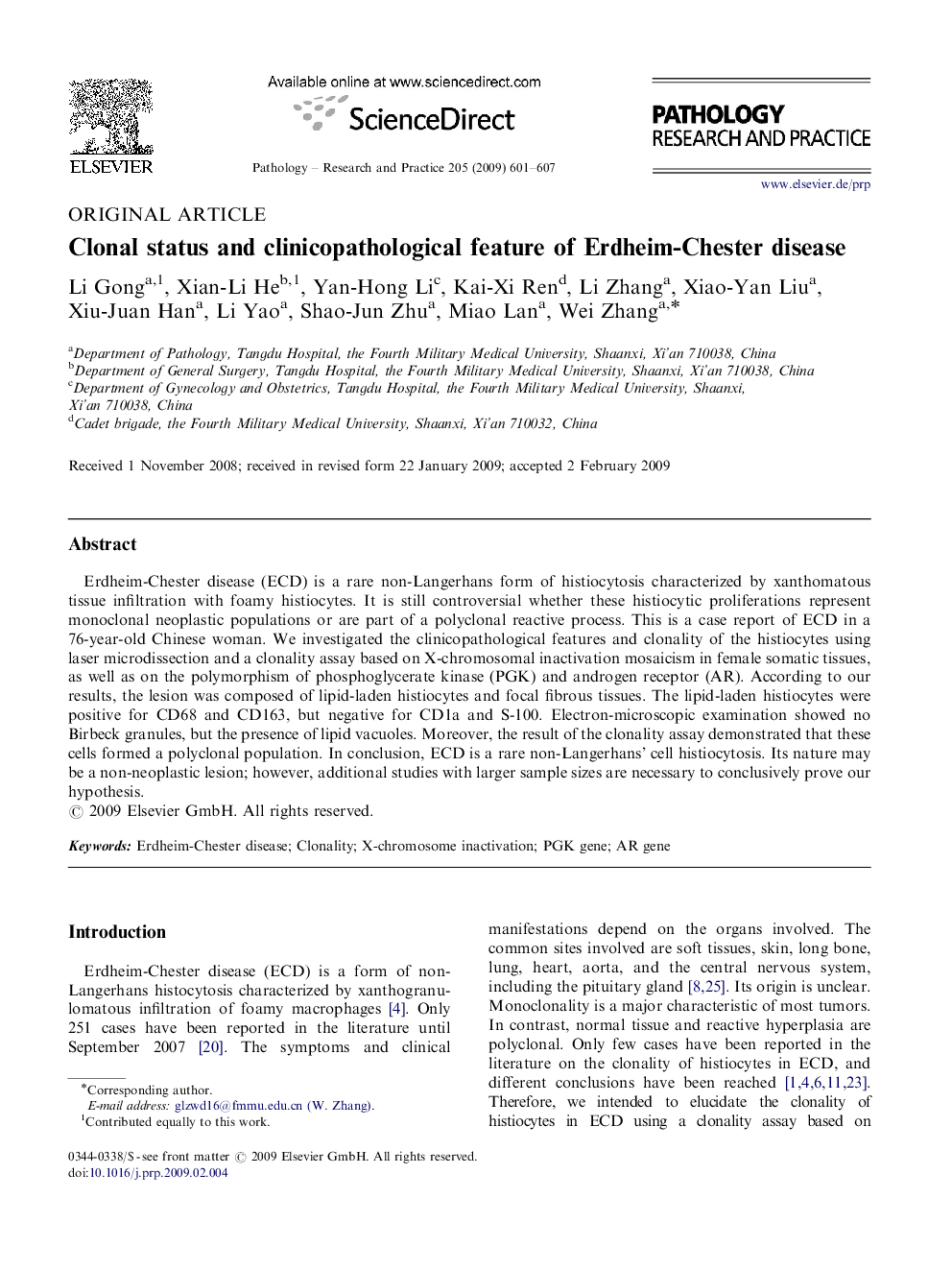| Article ID | Journal | Published Year | Pages | File Type |
|---|---|---|---|---|
| 2156524 | Pathology - Research and Practice | 2009 | 7 Pages |
Erdheim-Chester disease (ECD) is a rare non-Langerhans form of histiocytosis characterized by xanthomatous tissue infiltration with foamy histiocytes. It is still controversial whether these histiocytic proliferations represent monoclonal neoplastic populations or are part of a polyclonal reactive process. This is a case report of ECD in a 76-year-old Chinese woman. We investigated the clinicopathological features and clonality of the histiocytes using laser microdissection and a clonality assay based on X-chromosomal inactivation mosaicism in female somatic tissues, as well as on the polymorphism of phosphoglycerate kinase (PGK) and androgen receptor (AR). According to our results, the lesion was composed of lipid-laden histiocytes and focal fibrous tissues. The lipid-laden histiocytes were positive for CD68 and CD163, but negative for CD1a and S-100. Electron-microscopic examination showed no Birbeck granules, but the presence of lipid vacuoles. Moreover, the result of the clonality assay demonstrated that these cells formed a polyclonal population. In conclusion, ECD is a rare non-Langerhans’ cell histiocytosis. Its nature may be a non-neoplastic lesion; however, additional studies with larger sample sizes are necessary to conclusively prove our hypothesis.
